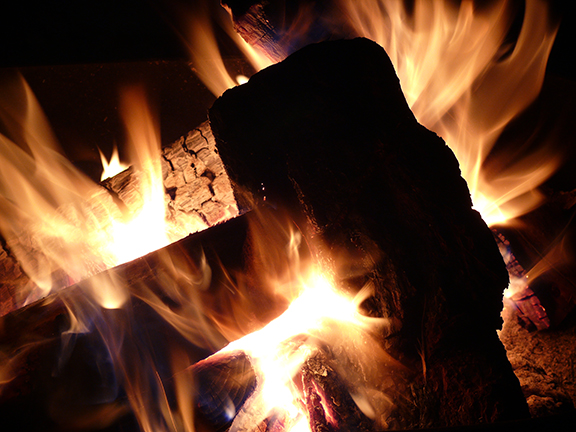The skill of building an efficient and safe campfire often distinguishes the camping newbie from the veteran. These tips will help you build a safe and controllable fire, and keep it going without having to kneel on your hands and knees and blow into the fire like a human bellows (a newbie characteristic).
In the dry seasons, and especially now with drought conditions across much of the West, check first with campground management whether open campfires are permitted. You may need a fire permit (free from Rangers) if not camping in a designated campground (boondocking), a shovel (folding is good), and bucket for water. If you are in a developed campground, there will be a designated fire area, such as an iron ring or fire pit. But in a primitive campground or when boondocking you may have to build a rock fire ring to contain the fire. Select a spot several yards away from (and out from under) any bushes or trees and clear a wide circle around the fire pit of any dry grass or debris.
Collect all your wood first before building the fire and stack in piles a few feet from your fire. Collect only downed and dead wood – do not break pieces off living trees or shrubs. You will need:
• Tinder (small dry twigs that snap easily–if they don’t, they are not dry enough). Collect three or four handfuls. A key to successful fire building is using adequate tinder.
• Kindling (larger sticks about the diameter of your thumb).
• Fuel wood (a bundle of split logs available from campgrounds or convenience and grocery stores near camping areas. Often you cannot find enough suitable dry logs from around your campsite).
Crunch your smallest tinder into a large bird nest-like pile and lay it in the center of the fire ring. Stack increasingly larger pieces of tinder over the nest in a teepee shape, leaving air space between the pieces on the upwind side and an opening to light the tinder. Use a wood match or butane lighter and light the bottom of your tinder pile in several places. As it catches, lay more tinder on your teepee as the fire grows.
Now start adding kindling to the teepee, gradually building up the size of the fire. As it collapses inward, keep adding more. When the fire is established:
• Add fuel wood to the teepee of burning kindling, building the fire wider and taller. As these logs burn down, add more.
• For a larger fire, lay two logs parallel on opposite sides of the fire, then stack two smaller pieces on the ends and perpendicular, like building a log cabin. Continue to add wood as needed, narrowing the pile toward the top.
When you leave your campsite or go to bed, let the fire burn down to coals then put it out by stirring and scattering the coals, making sure the flames are out. Sprinkle water on the coals and continue stirring. Hold your open hand over the fire and when you can no longer feel heat, it is probably out—but wait 5 or 10 more minutes and feel again for hot spots and sprinkle more water if needed.
When you break camp, shovel dirt over the ashes if you didn’t use a fire ring or grate. Many forest fires have occurred because campers thought their fire was out and the wind picked up and caused a flare up scattering hot coals to dry grass. Take no chances—be sure your fire is completely out!
You can find Bob Difley’s RVing ebooks on Amazon Kindle.
